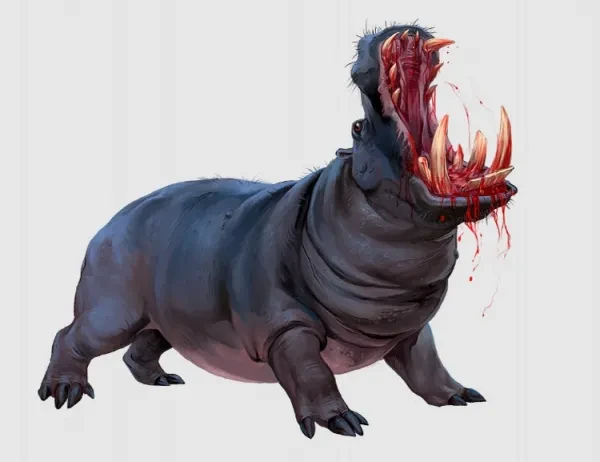
Classic literature has three types of conflicts: Man vs. man, man vs. self, and man vs nature. Let’s focus on that last thing today. Pathfinders face many threats. But animals can be just as deadly as cultists or maniacs.
15. Wolves
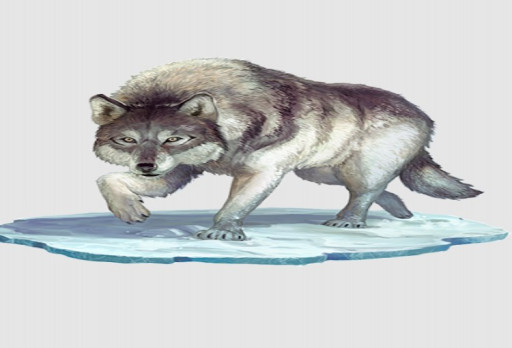
For this first entry, we’re going with a classic first encounter: The wolf pack. These creatures don’t traditionally hunt humans but may if they’re starving, trained, or magically compelled. For first-level adventurers, they can pose a challenge,
The big challenge they pose is that they can knock an opponent prone. This will make them easier to hit. Their pack attack ability allows them to do 1d4 extra damage when the target is within reach of two other allies. At a low level, this can add up, particularly if you’re dealing with someone with low HP like a wizard.
Wolves may not be particularly challenging but they serve the purpose of being a first encounter. They teach players about the combat system and how monster tactics can work. While many goblin encounters have goblins using poor tactics, wolves can and will focus fire. Or teeth in this case.
Wolf stats:
- Level 1
- Perception +7; low-light vision, scent (imprecise) 30 feet
- Skills Acrobatics +7, Athletics +5, Stealth +7, Survival +7
- Str +2, Dex +4, Con +1, Int -4, Wis +2, Cha -2
- AC 15; Fort +6, Ref +9, Will +5
- HP 24
- Speed 35 feet
- Melee jaws +9 [+4/-1], Damage 1d6+2 piercing plus Knockdown
- Pack Attack The wolf's Strikes deal 1d4 extra damage to creatures within reach of at least two of the wolf's allies.
14. Blindheim
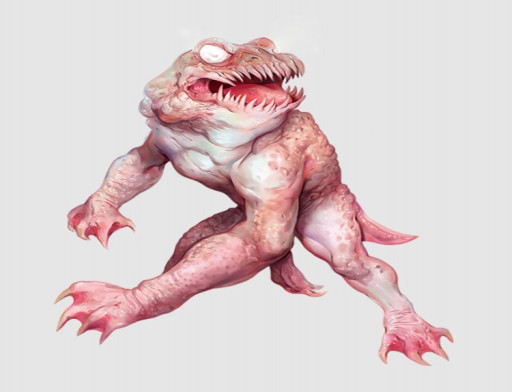
Some adventures take the party underground. For occasions when the party goes spelunking, there are plenty of animals lurking about. One such creature is the Blindheim.
They aren’t much of a threat by themselves and want to be left alone when encountered in the wild, they are often the captives of more malicious underground dwellers like the drow/ It’s with the drow that they pose the biggest threat.
The blindhheim are capable of inflicting blindness with their spotlight ability. The spotlight, emanating from a 30-foot cone can blind anyone in it. Many drow have sneak attack abilities. Sneak attacks work on blind characters.
Blindheim stats
- Level 2
- Perception +9; darkvision
- Skills Acrobatics +7, Athletics +6 (+9 to Leap or Swim), Stealth +7
- Str +2, Dex +3, Con +3, Int -4, Wis +1, Cha -2
- AC 18; Fort +9, Ref +9, Will +5
- HP 27; Immunities blinded, light
- Speed 25 feet, climb 15 feet, swim 15 feet
- Melee jaws +10 [+5/+0], Damage 1d12+2 piercing
- Melee claw +11 [+7/+3] (agile, finesse), Damage 1d8+2 slashing
- Spotlight (concentrate, light) Bright light shines from the blindheim's eyes in a 30-foot emanation (also creating dim light to 60 feet). Each creature in the bright light when the blindheim uses this action, or who enters it while the light continues, must attempt a DC 18 Fortitude save. It is then temporarily immune for 1 hour. This light remains until the blindheim dims its eyes by using this action again.
- Critical Success The creature is unaffected.
- Success The creature is dazzled for 1 round.
- Failure The creature is blinded for 1d4 rounds.
- Critical Failure The creature is blinded for 1 hour.
13. Desa-Desa
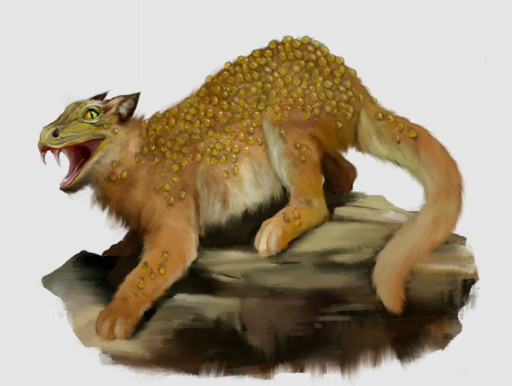
Cats are often cute and cuddly. However, some feral cats are less so. Desa-Desas are magical feral cats. Instead of being cuddly, they breathe hot gases. And sometimes fire.
This magical bobcat is a native of the jungle. It’s a good low-level opponent for a jungle adventure. It has natural camouflage abilities which can allow it to get the jump on a party.
The big issues are its bite and long-range attacks. Their bubble venom does additional damage every turn and makes the afflicted person weak to fire. Which will become a problem when they use fire blasts.
Desa Desa stats
- Level 2
- Perception +10; low-light vision
- Skills Acrobatics +8, Athletics +7, Stealth +9, Survival +8
- Str +2, Dex +5, Con +1, Int -4, Wis +4, Cha +1
- AC 18; Fort +5, Ref +11, Will +8
- HP 34; Resistances fire 4; Weaknesses electricity 2
- Volatile Gasses Whenever a desa-desa takes electricity damage, it must attempt a DC 18 Fortitude save. On a failure, the sparks cause the desa-desa to immediately use Fire Blast if it can, and the desa-desa becomes flat-footed for 1 round.
- Speed 40 feet, climb 20 feet
- Melee bite +11 [+6/+1], Damage 1d4+2 piercing plus bubble venom
- Bubble Venom (arcane, poison) A creature bit by a desa-desa breaks out in large, painful blisters which expand and pop as water in the victim's body turns into volatile gasses. Magical healing of any kind counteracts the bubble venom; Saving Throw DC 18 Fortitude; Maximum Duration 6 rounds; Stage 1 weakness to fire 2 and 1d6 piercing (1 round); Stage 2 weakness to fire 4 and 2d6 piercing (1 round)
- Fire Blast (arcane, evocation, fire) The desa-desa releases a burst of explosive gasses in all directions, dealing 3d6 fire damage to all creatures in a 5-foot emanation. The desa-desa can't use Fire Blast again for 1d4 rounds.
12. Giant Dragonfly
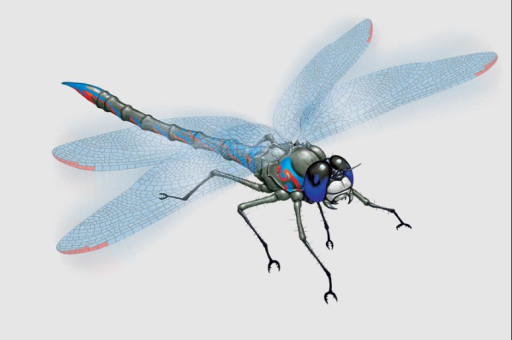
The world of Pathfinder has bugs just like our world. Some of those bugs just happen to be the size of a horse. Perfect for a jungle-based campaign, the giant dragonfly is a great low-level opponent.
The first major obstacle is the fact that it can fly. Hopefully, by level 4, the party will have diversified its attack skills. If not, this will be a problem/ The dragonfly can do fly-by attacks.
Another problem is its grab ability. It can grab a character, in the air, and drop them. Fall damage can become an issue. And the giant dragonfly can become a problem when paired with other creatures.
Giant Dragonfly stats
- Level 3
- Perception +11; darkvision, wavesense (imprecise) 30 feet
- Skills Acrobatics +10 (+12 to Maneuver in Flight), Athletics +12, Stealth +12
- Str +4, Dex +4, Con +2, Int -5, Wis +3, Cha +0
- AC 21; Fort +12, Ref +14, Will +9
- HP 60
- Speed 20 feet, fly 60 feet
- Melee mandibles +14 [+9/+4], Damage 1d12+7 piercing plus Grab
- Clutch Requirements The giant dragonfly has a Medium or smaller creature grabbed in its mandibles; Effect The dragonfly tries to transfer the grabbed creature to be clutched by its legs. The giant dragonfly attempts an Athletics check against the creature's Reflex DC. On a success, it transfers the creature (which remains grabbed) to its legs, freeing its mandibles to attack. The dragonfly can have only one creature clutched at a time.
- Snatch The giant dragonfly can Fly at half Speed while it has a creature grabbed or restrained by Clutch, carrying that creature along with it.
- Swoop The giant dragonfly Flies up to its Speed and makes one mandible Strike at any point during that movement.
11. Fen Mosquito Swarm
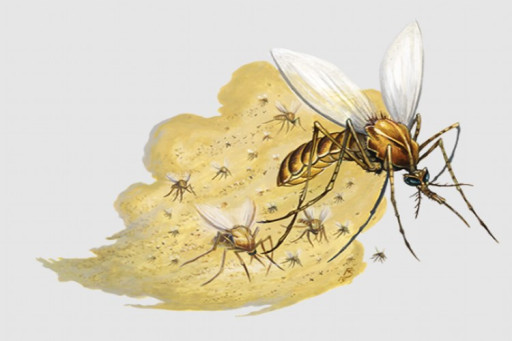
Mosquitos are the bane of any wilderness traveler. Appearing along the rivers, the Fen Mosquito Swarms can cause problems for Pathfinders. However, these swarms can be summoned.
Swarms are hard to contend with for a rookie party. If they don’t have spells or items that do area-of-effect damage. A good GM will drop some alchemist’s fire on the party if they don’t already have some. Swarms are hard to defend against since they hit anyone in their occupied areas.
To make the mosquito swarm worse, they can inflict disease. Specifically, they can inflict malaria. It can weaken a character for four days. On the 4th day, they’re dead. You may want to give them a scroll of cure disease in a treasure chest.
Fen Mosquito Swarm stats:
- Level 3
- Perception +8; darkvision
- Skills Acrobatics +6, Stealth +8
- Str +0, Dex +4, Con +3, Int -5, Wis +0, Cha -5
- AC 19; Fort +8, Ref +11, Will +5
- HP 25; Immunities precision, swarm mind; Resistances bludgeoning 2, piercing 5, slashing 5; Weaknesses area damage 5, splash damage 5
- Speed 5 feet, fly 25 feet
- Pyrexic Malaria (disease) The victim can't reduce its sickened condition while it's affected by pyrexic malaria; Saving Throw DC 20 Fortitude; Onset 4 days; Stage 1 sickened 1 (1 day); Stage 2 enfeebled 1 and sickened 1 (1 day); Stage 3 as stage 2 (1 day); Stage 4 unconscious (1 day); Stage 5 dead
- Swarming Bites Each enemy in the swarm's space takes 1d6 piercing damage (DC 20 basic Reflex save) and is exposed to pyrexic malaria. Creatures that fail the saving throw also take 1d4 persistent bleed damage.
10. Blood Boar
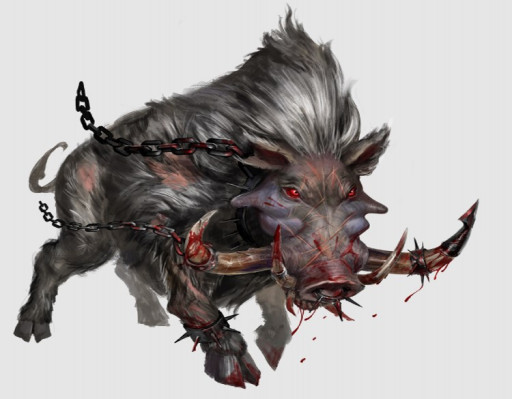
Bred to hunt down escaped slaves, blood boars frequently come into contact with Pathfinders. Particularly those who like freeing slaves and escorting them to freedom. These fearsome swine can track down anyone the Pathfinders are escorting.
The blood boar’s first big strength is its tracking ability. If the party is relying on stealth, the boar’s bloodsense will be a major problem. A rogue using invisibility to get sneak attack damage will find that ineffective.
Its squeal can inflict fear status. It can make a character’s magic attacks and resistance to magic attacks or poison lower. Considering that many of the handlers of the boar’s handlers use both, this can become an issue, particularly when it comes to enchantment spells. The boar’s charge can be a big issue since it ignores difficult terrain. And its blood quarry ability allows it to track a person for up to a mile. The only option is to stand and fight even in a disadvantageous position.
Blood Boar stats:
- Level 6
- Perception +15; bloodsense 60 feet, low-light vision, scent (imprecise) 30 feet
- Skills Acrobatics +10, Athletics +15, Survival +15
- Str +5, Dex +2, Con +4, Int -4, Wis +2, Cha -2
- Bloodsense The blood boar can precisely sense bleeding creatures within 60 feet.
- Blood Quarry On smelling a creature’s blood, the blood boar can designate that creature as its quarry. The blood boar can smell its quarry from up to a mile away. A blood boar can have only one quarry at a time
- AC 23; Fort +16, Ref +14, Will +10
- HP 98
- Ferocity
- Speed 40 feet
- Melee jaws +17 [+12/+7], Damage 2d8+8 piercing
- Chase Down The blood boar Strides toward its quarry, ignoring difficult terrain and gaining a +10-foot circumstance bonus to its Speed during the movement.
- Terrifying Squeal (auditory, emotion, fear, mental) The blood boar lets forth a hair-raising squeal. Each creature within 30 feet must succeed at a DC 23 Will save or become frightened 1 (frightened 2 on a critical failure). If the blood boar uses Terrifying Squeal on the same turn after using Chase Down, the Will save DC is instead 25.
9. Behemoth Hippopotamus
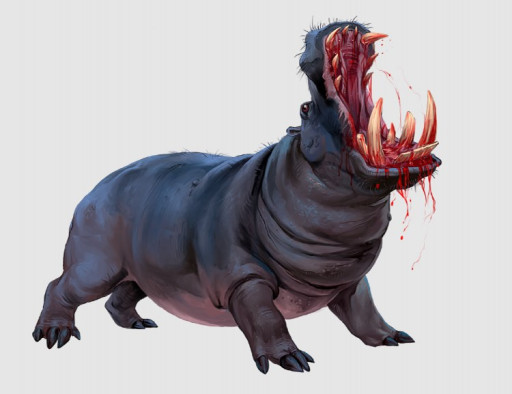
A famous song had a girl say she wanted a hippopotamus for Christmas. If someone at your table makes a similar wish for their Pathfinder party to have an encounter with a hippo, this is a good version of the animal to use. They will undoubtedly learn to word their wishes better.
The Behemoth Hippopotamus is bigger than some elephants. It tends to make lake and river crossings harder as if the boat is smaller than the hippo, the hippo can try capsizing it, forcing the party into an aquatic combat scenario while the boat floats away.
But it’s just as dangerous on land. It can bite two characters that are next to each other, which can impede teamwork feats. Worst of all is that it can swallow characters whole. These hippos can and will eat anything.
Behemoth Hippopotamus stats:
- Level 9
- Perception +19; low-light vision, scent (imprecise) 30 feet
- Skills Athletics +23, Stealth +18 (+20 in water), Survival +17
- Str +7, Dex +4, Con +7, Int -4, Wis +5, Cha -2
- Deep Breath The behemoth hippopotamus can hold its breath for 1 hour.
- AC 29; Fort +22, Ref +17, Will +19
- HP 190
- Speed 35 feet, swim 35 feet
- Melee jaws +23 [+18/+13] (deadly d12, reach 10 feet), Damage 2d12+10 piercing plus Grab
- Melee foot +21 [+16/+11], Damage 2d8+9 bludgeoning
- Aquatic Ambush 40 feet
- Capsize (attack) The behemoth hippopotamus tries to capsize an adjacent aquatic vessel of its size or smaller. The behemoth hippopotamus must succeed at an Athletics check with a DC of 30 (reduced by 5 for each size smaller the vessel is than the hippo) or the pilot's Sailing Lore DC, whichever is higher.
- Double Chomp The behemoth hippo makes a jaws Strike targeting two creatures adjacent to each other. Roll the attack and damage once, and apply it to each creature separately. An Engulfing Chomp counts as two attacks for the multiple attack penalty.
- Swallow Whole Medium, 2d12+10 bludgeoning, Rupture 26.
- Trample Large or smaller, foot, DC 29
8. Giant Snapping Turtle
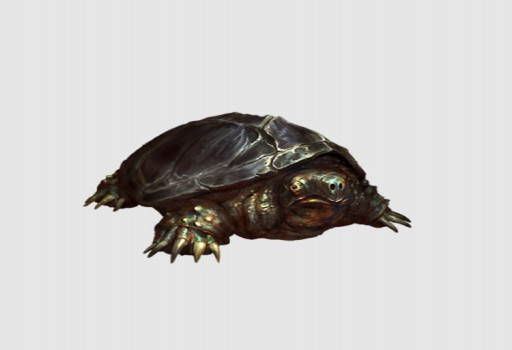
Turtles are typically mild-mannered. Turtles are typically much smaller too. In the case of the giant snapping turtle, neither of these things is true. Whether faced in the wild or if someone conjures one, they can be a fierce opponent.
These turtles have a strong defense with an Arnor Class (30 if it retracts in its shell). So turning this thing into wax is easier said than done. Many conjurers may try to use it at a chokepoint as a tank of sorts to keep the fighters busy. Its ability to swallow creatures whole can make it register as a priority to a party.
Its real fierceness comes into play during aquatic combat. Its jaws though their only method of attack, are nothing to sneeze at. It can bite and grab opponents with those jaws. A grabbed party member can be swallowed whole. A more crafty conjurer can have the turtle pul its victim underwater to try and drown them. The turtle can be underwater for 2 hours. An unprepared character has a time limit that is a bit shorter.
Giant Snapping Turtle Stats
- Level 9
- Perception +17; low-light vision, scent (imprecise) 30 feet
- Skills Athletics +20
- Str +7, Dex +0, Con +4, Int -4, Wis +4, Cha -2
- Deep Breath The giant snapping turtle can hold its breath for 2 hours.
- AC 28; Fort +19, Ref +15, Will +19
- HP 170
- Speed 20 feet, swim 40 feet
- Melee jaws +22 [+17/+12], Damage 2d12+10 piercing plus Improved Grab
- Capsize (attack, move) The turtle tries to capsize an adjacent aquatic vessel of its size or smaller. The turtle must succeed at a DC 35 Athletics check (reduced by 5 for each size smaller the vessel is than the turtle) or the pilot's Sailing Lore DC, whichever is higher.
- Shell Defense The giant snapping turtle retracts its limbs and head into its shell and ends its turn. This increases its AC to 30, but it can't act except to reemerge, which it can do as a single action.
- Swallow Whole Large, 2d12+7 bludgeoning, Rupture 30
7. Mastodon
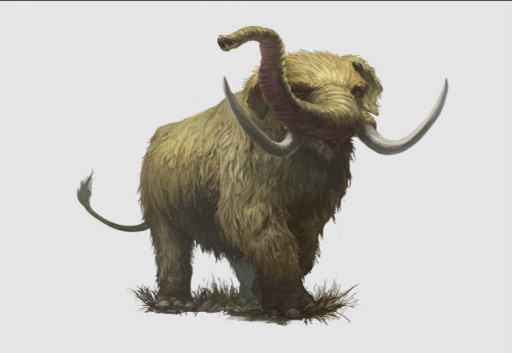
Even though mastodons and other elephant variants are largely docile and want to be left alone, that doesn’t mean they’re harmless. They may be compelled by magical corruption, a change in mental state, or simple self-defense to attack. And they can pose a big problem for the unprepared,
Its defense and speed can be its first big hurdle. Its high AC can be an issue for all but the most optimized fighters or people getting into flanking position. This AC can be enhanced by a summoner too. Its speed is higher than average, allowing it to traverse a large section of the map.
Every part of the elephant is a weapon. Its legs can stomp and even trample players. They can gore players with their tusks with reduced attack penalties if they gore different players. It can pick up a player with its trunk and fling them across the battlefield. This causes fall damage and breaks up positions.
Mastodon stats
- Level 9
- Perception +17; low-light vision, scent (imprecise) 30 feet
- Skills Athletics +21, Stealth +17
- Str +8, Dex +0, Con +5, Int -4, Wis +2, Cha -2
- AC 26; Fort +20, Ref +13, Will +17
- HP 175
- Speed 45 feet
- Melee tusk +21 [+16/+11] (reach 15 feet), Damage 3d8+12 piercing
- Melee trunk +21 [+16/+11] (reach 15 feet), Effect grabbing trunk
- Melee foot +21 [+16/+11] (reach 10 feet), Damage 2d10+12 bludgeoning
- Dual Tusks The mastodon makes two tusk Strikes, each against a different creature. This counts as one attack for the mastodon's multiple-attack penalty, and the penalty doesn't increase until after both attacks.
- Grabbing Trunk A Medium or smaller creature hit by the mastodon's trunk is grabbed. If the mastodon moves, it can bring the grabbed creature along with it.
- Trample Large or smaller, foot, DC 27
6. Goliath Spider
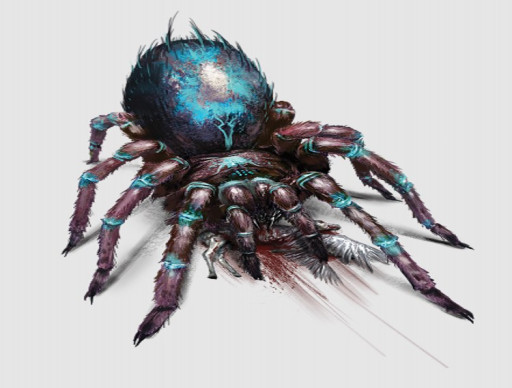
Few things arouse as much revulsion as a spider. It’s a human evolutionary trait considering that many of the spiders humans first encountered were venomous. Now imagine all the spiders our ancestors feared were given all the steroids in the world. You would get the gargantuan goliath spider.
Dwelling deep in the jungle, this spider has a gargantuan appetite to match its size. Because it is gargantuan, the spider’s hangs have a reach of 10 feet. It can slide up and down its webs easily and if players run into it before they know it’s there, the spider can move closer to them before combat starts.
Paired with a summoner, this spider can be deadly. The spider’s venom, if not dealt with in 3 rounds, can paralyze for hours. Effectively putting them out of the fight unless they’re cured. The web tethers are also hard to break and render victims immobile. This makes them ideal summons for casters who like using spells like fireball.
Goliath Spider stats
- Level 11
- Perception +22; darkvision, web sense
- Skills Acrobatics +18, Athletics +23, Stealth +22
- Str +8, Dex +5, Con +7, Int -5, Wis +3, Cha -4
- Web Sense The goliath spider has imprecise tremorsense to detect the vibrations of creatures touching its web.
- AC 30; Fort +25, Ref +21, Will +17
- HP 220
- Spring Upon Prey (attack); Requirement Initiative has not yet been rolled. Trigger A creature touches the goliath spider’s web while the spider is on it. Effect The goliath spider automatically notices the creature and Strides, Climbs, or Descends on a Web before it rolls initiative.
- Speed 45 feet, climb 30 feet
- Melee fangs +24 [+19/+14] (reach 10 feet), Damage 2d12+12 piercing plus goliath spider venom
- Ranged web +22 [+17/+12] (range increment 60 feet), Effect web tether
- Descend on a Web (move) The goliath spider moves straight down up to 120 feet, suspended by a web line. It can hang from the web or drop off. The distance it Descends on a Web doesn’t count for falling damage. A creature that successfully Strikes the web (AC 20, Hardness 5, 20 HP) severs it, causing the spider to fall.
- Goliath Spider Venom (incapacitation, poison) Saving Throw Fortitude DC 30; Maximum Duration 6 rounds; Stage 1 2d6 poison and slowed 1 (1 round); Stage 2 2d6 poison and slowed 2 (1 round); Stage 3 paralyzed for 2d4 hours.
- Web Tether A creature hit by the spider’s web Strike is restrained and tethered to the spider, preventing it from moving farther away from the spider. The spider can have one creature tethered at a time. The DC to Escape or Force Open the web is 30. The tether can be severed with a Strike (AC 20, Hardness 5, HP 20), but this doesn’t free the restrained creature.
5. Lion Visitant
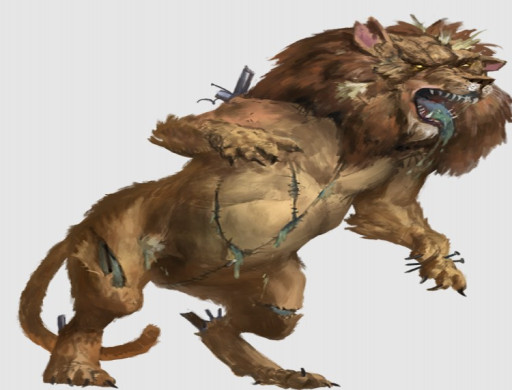
Just like in the real world, performing animals are often abused in the world of Pathfinder. However, sometimes the animals don’t want to stay dead after they die. They seek to come back as undead visitants. However, their vengeance can often turn indiscriminate.
Like your standard lions, the visitant’s teeth and jaws are brutal. They can pounce on anyone and will often use this attack on anyone that doesn’t see them for additional sneak attack damage. Since these undead lions also maintain their original intelligence they can use flanking maneuvers for sneak attacks if there’s more than one lion visitant on the field.
What can make this hard is that unlike most undead, who are either mindless or power–mad, the visitant is at least somewhat sympathetic. While the party does have to stop the animal’s rampage, they will not be happy about it. They will be less happy if they have to protect the cause of the problem. Sometimes the hardest thing to do is to help someone who doesn’t deserve it.
Lion Visitant Stats
- Level 5
- Perception +13; darkvision, lifesense (imprecise) 60 feet
- Skills Acrobatics +13, Athletics +13, Stealth +13
- Str +6, Dex +4, Con +2, Int -4, Wis +2, Cha +0
- AC 22; Fort +9, Ref +11, Will +15
- HP 95 (negative healing); Immunities death effects, disease, paralyzed, poison, unconscious; Weaknesses positive 7, whip vulnerability
- Whip Vulnerability A lion visitant takes 7 additional damage from whips.
- Speed 30 feet
- Melee jaws +15 [+10/+5], Damage 2d6+8 piercing plus Grab
- Melee claw +15 [+11/+7] (agile), Damage 2d4+8 slashing
- Pack Attack The visitant deals an extra 1d4 damage to any creature that’s within reach of at least two of the visitant’s allies.
- Pounce The visitant Strides and makes a Strike at the end of that movement. If the visitant began this action hidden, it remains hidden until after the ability’s Strike.
- Roar The visitant lets out a loud and horrifying roar. Each creature within 100 feet must attempt at a Will save. No matter the result, affected creatures are then temporarily immune to the effect for 1 minute.
- Critical Success The creature is unaffected.
- Success The creature is frightened 1.
- Failure The creature is frightened 2.
- Critical Failure The creature is frightened 3.
- Sneak Attack The visitant deals an extra 1d8 precision damage to flat-footed creatures.
4. Tyrannosaurus
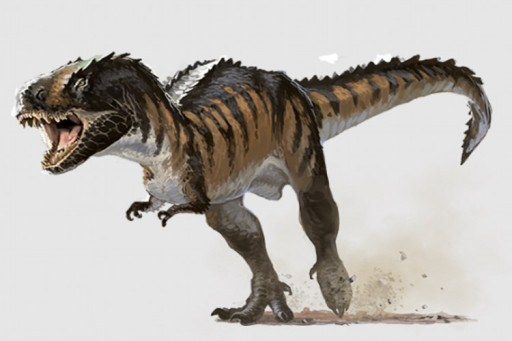
In our world, dinosaurs are extinct. In the world of Pathfinder, where summoning magic and multiple different dimensions and sub-dimensions are all in play, many things are possible. This includes the T-Rex.
The tyrannosaurus is every bit as fierce as it looks. It can stomp and trample over unprepared opposition. Its stomp can pin someone to the ground, making them easier to continue stomping them. It can also bite out a nasty chunk of HP out of characters.
Its jaws are its biggest strength. Anyone who gets bitten runs the risk of being flung through the air and taking fall damage or worse, being swallowed whole. Many high-level summoners opt to use the T-rex if there’s room.
Tyrannosaurus Stats
- Level 10
- Perception +19; low-light vision, scent (imprecise) 30 feet
- Skills Acrobatics +15, Athletics +24
- Str +8, Dex +1, Con +5, Int -4, Wis +3, Cha +0
- AC 29; Fort +21, Ref +15, Will +19
- HP 180
- Speed 40 feet
- Melee jaws +22 [+17/+12] (deadly 1d12, reach 20 feet), Damage 2d12+12 piercing plus Grab
- Melee foot +22 [+17/+12] (reach 15 feet), Damage 2d10+12 bludgeoning
- Fling Requirements A creature is Grabbed in the tyrannosaurus's jaws. Effect The tyrannosaurus flings the creature into the air up to 10 feet up from its mouth and 20ft away. The creature falls 25 feet (assuming the tyrannosaurus flings it as high as it can) and takes falling damage accordingly. If the flung creature lands on another creature, the creature it lands on takes the same amount of bludgeoning damage. The creature being landed upon can attempt a DC 23 basic Reflex save.
- Pin Prey Trigger The tyrannosaurus critically hits a Large or smaller foe with its foot. Effect The creature struck by the foot is knocked prone and the tyrannosaurus uses its foot to hold the creature in place. As long as the tyrannosaurus doesn't move from its position, the pinned creature is Grabbed. A tyrannosaurus gains a +2 circumstance bonus to attack a creature it has pinned in this manner, but it cannot use swallow whole on the target unless it uses its jaws to Grab the victim first.
- Swallow Whole (attack) Medium, 3d6+8 bludgeoning, Rupture 26
- Trample Huge or smaller, foot, DC 29
3. Spinosaurus
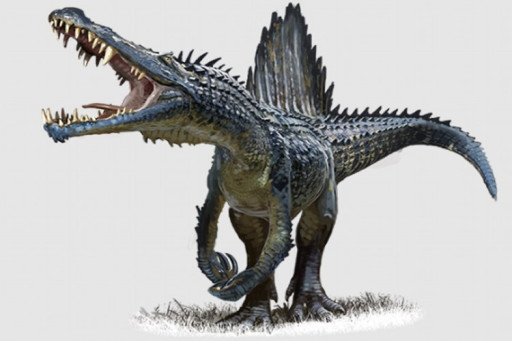
For those who are doing water-based campaigns, there’s the Spinosaurus. This is the highest-level un-enhanced dinosaur Pathfinder has to offer at the moment. And it can pose a challenge to players.
Since its equally at home on land or in water, it can be used as a sea-borne or land-based threat. Like the T-Rex, it can bite its opposition. It can also swallow them or pull them underwater if they’re being controlled. Because it has claws, it uses them to attack creatures in its mouth.
However, its big threat is in water. It can create a wave that can damage and stun creates within a 30-foot cone. The last thing party members want in a battle with a high-level creature is to lose actions. However, more dangerous is that any player swimming in the water that gets shot in the air might also get sent flying (but that is at GM's discretion). Plus, if this creature is being encountered while on a boat, the party might face a challenge keeping the boat from sinking.
Spinosaurus Stats
- Level 11
- Perception +21; low-light vision, scent (imprecise) 30 feet
- Skills Acrobatics +19, Athletics +23 (+25 to Swim)
- Str +8, Dex +4, Con +6, Int -4, Wis +2, Cha +1
- Deep Breath A spinosaurus can hold its breath for 2 hours.
- AC 30; Fort +23, Ref +21, Will +19
- HP 200Speed 40 feet, swim 30 feet
- Melee bite +23 [+18/+13] (deadly d12, reach 20 feet), Damage 2d12+14 piercing plus Grab
- Melee claw +23 [+19/+15] (agile, reach 15 feet), Damage 2d8+14 slashing
- Rip and Tear Requirements The spinosaurus has a creature grabbed in its jaws; Effect The spinosaurus reaches up and slashes with its claws at the creature it has grabbed, dealing 4d8 slashing damage (DC 30 basic Reflex save) and 1d6 persistent bleed damage.
- Staggering Sail (incapacitation) Requirements The spinosaurus is swimming on the surface of the water; Effect With a powerful lunge to the side, the spinosaurus uses its sail to slap the surface of the water, creating a crushing wave of water that deals 6d6 bludgeoning damage in a 30-foot cone. Each creature in the water in the area must attempt a DC 30 Reflex save.
- Critical Success The creature is unaffected.
- Success The creature takes half damage.
- Failure The creature takes full damage and is slowed 1 until the end of its next turn.
- Critical Failure The creature takes double damage and is stunned 3.
- Swallow Whole (attack) Medium, 2d12+12 bludgeoning, Rupture 19
2. Sportlebore Swarm
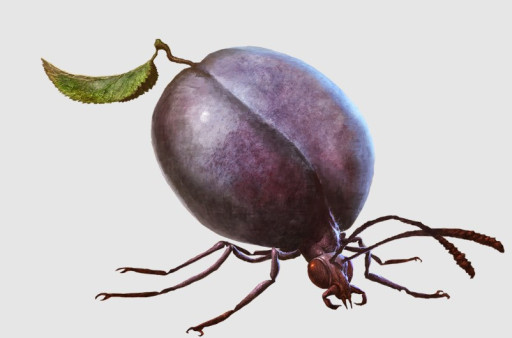
Sportlebores can often get into trail rations and ruins them. However, swarms of them can become a major problem. Particularly if the party has a lot of casters.
Like most swarms, it is best to deal with them via area and splash damage. Hopefully, by level 7, the party will have spells to deal with them. However, this swarm has a trick.
The trick is to pour down the throats of anyone who opens their mouth. If the person is trying to cast a spell, they can lose the spell and lose the ability to cast spells for multiple rounds. Many high-level casters will use them to attack casters. Particularly since they can summon things from a distance.
Sportlebore Swarm Stats
- Level 7
- Perception +13; low-light vision
- Skills Acrobatics +17, Stealth +17
- Str +2, Dex +6, Con +4, Int -4, Wis +2, Cha +4AC 25; Fort +15, Ref +17, Will +13
- HP 85; Immunities precision, swarm mind; Resistances bludgeoning 3, piercing 7, slashing 7; Weaknesses area damage 7, splash damage 7
- Pour Down Throat Trigger A creature in the sportlebore swarm's area speaks, uses a verbal component, or opens its mouth; Effect A portion of the sportlebore swarm attempts to surge down the throat of the triggering creature, which must attempt a DC 25 Fortitude save.
- Critical Success The creature is unaffected.
- Success The creature gets a mouthful of sportlebores. It spits the insects out and avoids further damage, but it can't speak for 1 round, and if it was performing a verbal spellcasting action, the spell fails and the caster wastes the action.
- Failure The creature takes 4d6 piercing damage from sportlebore bites, can't speak for 1 round, and loses a spell as noted under Success.
- Critical Failure As failure, but the creature is also exposed to sportlebore infestation.
- Speed 35 feet, fly 35 feet
- Swarming Bites Each creature in the sportlebore swarm's area takes 4d6 piercing damage (DC 25 basic Reflex save).
1. Black Scorpion
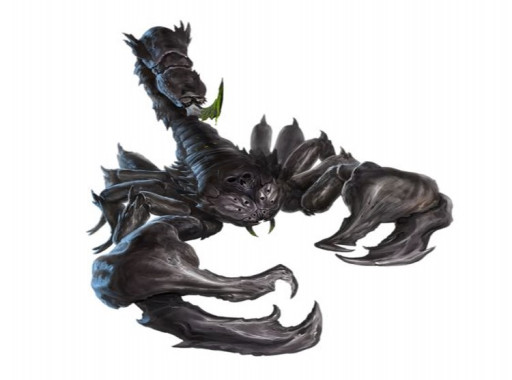
Credit Fantasy Pics Inc
Even small scorpions pose a problem for Pathfinder. The small ones can swarm and annoy Pathfinders and general campers. However, the Black Scorpion can terrorize entire towns.
This gargantuan scorpion has brutal claws and pincers. Their 30-foot reach can hinder the ability of casters to cast their spells. It can also grab and constrict people. Plus the thing’s hard carapace can make it hard to hit.
In addition to hitting like a truck, the black scorpion’s venom can be a major problem. It can make a person clumsy and slow, which makes them less effective in battle, both reducing their actions in battle and making them more vulnerable to damage from spells that require reflex saves. This animal is the highest-level animal that a summoner can summon as of this writing.
Black Scorpion Stats
- Level 15
- Perception +27; darkvision, tremorsense (imprecise) 90 feet
- Skills Athletics +30
- Str +9, Dex +4, Con +6, Int -5, Wis +6, Cha -4
- AC 38; Fort +29, Ref +25, Will +25
- HP 275
- Speed 50 feet
- Melee pincer +30 [+26/+22] (agile, reach 30 feet), Damage 3d12+15 slashing plus Grab
- Melee stinger +30 [+25/+20] (reach 30 feet), Damage 3d8+15 piercing plus black scorpion venom
- Black Scorpion Venom (poison) Saving Throw DC 36 Fortitude; Maximum Duration 6 rounds; Stage 1 2d12 poison damage and clumsy 2 (1 round); Stage 2 3d12 poison damage, clumsy 2, and slowed 1 (1 round); Stage 3 4d12 poison damage, clumsy 4, and slowed 2 (1 round)
- Greater Constrict 2d12+12 bludgeoning, DC 36
- Rapid Stinging The black scorpion makes three stinger Strikes, each against a different target. Its multiple-attack penalty applies to each attack, but the penalty increases only after all the attacks have been made.
